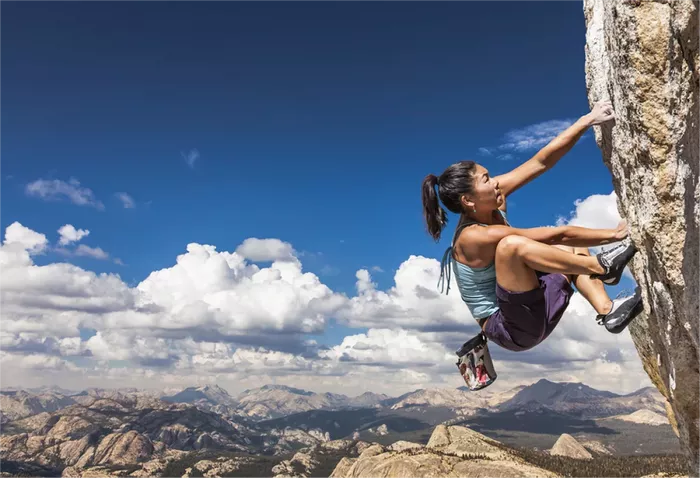Rock climbing is not just a sport; it’s a thrilling adventure that allows you to conquer vertical terrains, challenge yourself physically and mentally, and connect with nature in a unique way. Whether you’re drawn to the rugged beauty of mountains or the sculpted faces of indoor climbing walls, starting your rock climbing journey can be both exhilarating and daunting. This comprehensive guide will walk you through everything you need to know to begin your ascent into the world of rock climbing.
Understanding the Basics
Before you start scaling cliffs, it’s crucial to understand the fundamentals of rock climbing. This includes familiarizing yourself with essential equipment, learning basic climbing techniques, and understanding safety protocols.
Equipment Essentials
Begin by investing in the necessary gear. This typically includes:
1. Climbing Shoes: These specialized shoes provide grip and support on the rock surface.
2. Harness: A harness is essential for attaching yourself to the climbing rope.
3. Climbing Rope: Choose a rope suitable for your climbing needs, whether you’re tackling indoor walls or outdoor crags.
4. Helmet: Protect your head from falling debris or accidental impacts.
5. Carabiners and Quickdraws: These tools are used to attach the rope to bolts or other anchor points.
6. Chalk and Chalk Bag: Keep your hands dry and improve your grip with climbing chalk.
Ensure that all equipment is properly maintained and meets safety standards before each climb.
Learning the Ropes
Next, familiarize yourself with basic climbing techniques. These include:
1. Footwork: Proper foot placement is crucial for stability and balance.
2. Handholds: Learn to grip holds efficiently, utilizing a combination of crimps, jugs, and pockets.
3. Body Positioning: Understand how to position your body to maximize strength and minimize fatigue.
4. Belaying: Master the art of belaying, the technique used to manage the climbing rope and protect your partner.
Consider enrolling in a beginner’s climbing course or hiring a certified guide to learn these skills in a safe and controlled environment.
Safety First
Rock climbing can be inherently dangerous, but adhering to safety protocols can minimize risks. Always:
1. Check Equipment: Inspect all gear before each climb to ensure it’s in proper working condition.
2. Communicate: Maintain clear communication with your climbing partner, especially when belaying.
3. Double-Check Knots: Verify that all knots are tied correctly and securely.
4. Stay Aware of Surroundings: Be mindful of potential hazards such as loose rocks or inclement weather.
Additionally, familiarize yourself with the ethics and guidelines specific to the climbing area you’re visiting, respecting both the environment and other climbers.
Choosing Your Climbing Style
Rock climbing encompasses a variety of styles and disciplines, each offering its own unique challenges and rewards. Some popular styles include:
1. Top-Roping: Ideal for beginners, top-roping involves climbing with the rope anchored above you, providing maximum safety.
2. Bouldering: Climbing shorter routes, typically without ropes, and focusing on power, technique, and problem-solving.
3. Sport Climbing: Ascending routes with pre-placed bolts for protection, often requiring lead climbing skills.
4. Traditional Climbing: Placing your own gear for protection as you climb, offering a greater sense of adventure and self-reliance.
Experiment with different styles to discover what resonates with you and fits your climbing goals.
Finding Climbing Partners
Climbing is often a social sport, and having reliable partners can enhance your experience and safety. Look for local climbing clubs, online forums, or gym bulletin boards to connect with other climbers. Joining a community can provide opportunities for mentorship, shared experiences, and new friendships.
Choosing Your Climbing Destinations
Whether you’re drawn to towering peaks or urban climbing gyms, there’s a plethora of destinations to explore. Consider factors such as:
1. Location: Choose climbing areas that are accessible and align with your skill level and interests.
2. Difficulty Level: Research route grades and difficulty ratings to ensure they match your abilities.
3. Terrain: Decide between outdoor crags, indoor climbing gyms, or even climbing vacations abroad.
4. Seasonality: Be mindful of weather conditions and seasonal closures that may affect climbing availability.
Start by exploring local climbing spots before venturing further afield, gradually expanding your repertoire as your skills and confidence grow.
Training and Progression
Improving as a climber requires dedication, practice, and a willingness to push your limits. Incorporate strength training, flexibility exercises, and climbing-specific workouts into your routine to enhance your climbing performance. Set achievable goals and track your progress over time, celebrating milestones along the way.
Conclusion
Embarking on a rock climbing journey is an exhilarating endeavor filled with challenges, triumphs, and unforgettable experiences. By understanding the basics, prioritizing safety, and immersing yourself in the climbing community, you’ll be well-equipped to navigate the vertical world with confidence and enthusiasm. So, gear up, find your footing, and prepare to reach new heights on your rock climbing adventure.

